Ditapis dengan
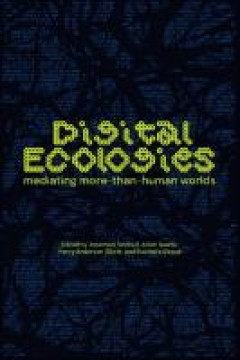
E-book Digital Ecologies
In an era of mass extinction, climate emergency, and biodiversity collapse, what role do digital media have in securing liveable futures? To what extent are digital media mitigating or intensifying environmental crises? And what theoretical, empirical, and methodological frameworks are needed to make sense of emerging digital ecologies? In a context where digital media are reshaping the futures…
- Edisi
- -
- ISBN/ISSN
- 9781526170354
- Deskripsi Fisik
- 296 hlmn
- Judul Seri
- -
- No. Panggil
- 302.231 TUM d
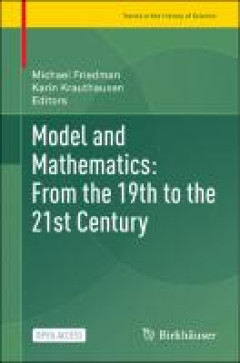
E-book Model and Mathematics: From the 19th to the 21st Century
This open access book collects the historical and medial perspectives of a systematic and epistemological analysis of the complicated, multifaceted relationship between model and mathematics, ranging from, for example, the physical mathematical models of the 19th century to the simulation and digital modelling of the 21st century. The aim of this anthology is to showcase the status of the mathe…
- Edisi
- -
- ISBN/ISSN
- -
- Deskripsi Fisik
- -
- Judul Seri
- -
- No. Panggil
- 510.24 ROB e
Hidden Potential
Kita hidup di dunia yang terobsesi dengan bakat. Kita memuja-muja siswa berbakat di sekolah, atlet genius dalam olahraga, dan anak ajaib dalam musik. Namun, mengagumi orang-orang yang memulai sesuatu dengan keunggulan bawaan lahir membuat kita mengabaikan jarak yang bisa kita tempuh untuk mencapai kejayaan. Kita meremehkan berbagai keterampilan yang bisa kita pelajari dan seberapa jauh kita bis…
- Edisi
- -
- ISBN/ISSN
- 9786020679020
- Deskripsi Fisik
- 320 hlm; 15 x 22.5 cm
- Judul Seri
- -
- No. Panggil
- 155.25 GRA h
E-book Songs of the Royal Zhou and the Royal Shao
The songs of the Royal Zh?u (“Zh?u Nán” ??) and of the Royal Shào (“Shào Nán” ??) have formed a conceptual unit since at least the late Spring and Autumn period (771–453 BC). With this book Meyer and Schwartz provide a first complete reading of their earliest, Warring States (453–221 BC), iteration as witnessed by the ?nhu? University manuscripts. As a thought experiment, the au…
- Edisi
- -
- ISBN/ISSN
- 9789004512436
- Deskripsi Fisik
- 235 hlm
- Judul Seri
- -
- No. Panggil
- 091 MEY s
E-book Middlemarch : Epigraphs and Mirrors
This short book aims to turn a modest, one might even think trivial, literary labour into something more substantial, going beyond one particular novel into broader questions of novel-writing, character and narrative. My starting point is tracking down those allusions and quotations in Middlemarch that have hitherto gone unidentified by scholars. Most…
- Edisi
- -
- ISBN/ISSN
- 9781800641600
- Deskripsi Fisik
- 163 hlm
- Judul Seri
- -
- No. Panggil
- 928.21 ROB m
E-book Islamic Sensory History: Volume 2: 600–1500
Islamic Sensory History, Volume 2: 600–1500 presents a selection of texts translated into English from Arabic and Persian. These selected texts all offer illustrative engagements with issues related to the sensorium in different times, places, and social milieus throughout the early and medieval history of Islamic societies. Each chapter is prefaced by an introductory essay by the translator,…
- Edisi
- -
- ISBN/ISSN
- 9789004515932
- Deskripsi Fisik
- 617 halaman, ilus.
- Judul Seri
- -
- No. Panggil
- 152 BUR i
E-book The Oracle Bone Inscriptions from Huayuanzhuang East
The Huayuanzhuang East oracle bone inscriptions, first discovered in 1991 and completely published in six folio volumes in 2003, are a synchronically compact and unified late Shang (ca. 1250-1045 BC) corpus of several thousand individual divination accounts inscribed on hundreds of still intact turtle shells and cattle scapulae. Produced under the patronage of a prince of the royal f…
- Edisi
- -
- ISBN/ISSN
- 9781501514487
- Deskripsi Fisik
- 488 hlm
- Judul Seri
- -
- No. Panggil
- 418.02 SCH t
E-book The Medieval Economy of Salvation : Charity, Commerce, and the Rise of…
It was a cold winter evening in 2010, and I had just arrived in Paris for a short research trip. The tiny hotel where I would be staying was on the fifth floor of the ophthalmological wing of the hôtel-Dieu (or hospital) just across from the cathedral of Notre Dame. 1 Given the subject of the book I was in France to research, it seemed appropri-ate that I should s…
- Edisi
- -
- ISBN/ISSN
- 9781501742118
- Deskripsi Fisik
- 336 hlm
- Judul Seri
- -
- No. Panggil
- 909.5 DAV t
E-book Metaphysical Poems
‘Metaphysical poetry’ is a problematic term: it is broad and the phe-nomenon it denotes has blurred borderlines. In the eyes of some of the leading figures within classicist aesthetics, this description seemed pejorative, suggesting poems that were too detached from the rules of rationalised discourse, and often invoked contradictory ideas. T.S. Eliot pointed this out in his essay The Metap…
- Edisi
- -
- ISBN/ISSN
- 9783657790432
- Deskripsi Fisik
- 356 hlm
- Judul Seri
- -
- No. Panggil
- 141.6 MIC m
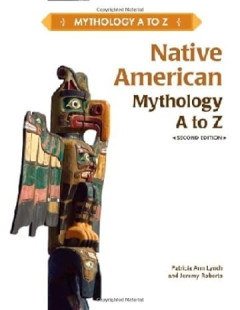
E-book Native American Mythology A to Z
Presents detailed coverage of the deities, legendary heroes and heroines, important animals, objects, and places that make up the mythic lore of the many peoples of North America.
- Edisi
- -
- ISBN/ISSN
- 97-1438133119
- Deskripsi Fisik
- 161 halaman, ilus.
- Judul Seri
- -
- No. Panggil
- 398.2 LYN n
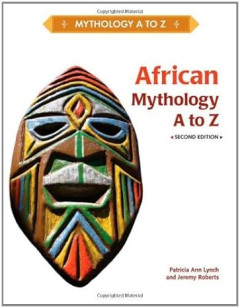
E-book African Mythology A to Z
The African continent is home to a fascinating and strong tradition of myth, due in part to the long history of human habitation in Africa; the diversity of its geography, flora, and fauna; and the variety of its cultural beliefs. African Mythology A to Z, Second Edition is a readable reference to the deities, places, events, animals, beliefs, and other subjects that appear in the myths of vari…
- Edisi
- Second Edition
- ISBN/ISSN
- 9781604134155
- Deskripsi Fisik
- 176 halaman, ilus.
- Judul Seri
- -
- No. Panggil
- 299.6
E-book Chinese Mythology A to Z
In ancient Chinese civilization, emperors were revered as the direct descendants of the gods, who ruled all of nature and the heavens. Animal bones were consulted as oracles to answer the great questions of life and death, and ancestral spirits were thought to roam the earth, negotiating with the gods on behalf of the living. From the legends of the Eight Immortals to the teachings of Confucius…
- Edisi
- -
- ISBN/ISSN
- 9780816048703
- Deskripsi Fisik
- 177 halaman, ilus.
- Judul Seri
- -
- No. Panggil
- 299.513 ROB c
E-book Japanese Mythology A to Z
In a world thought to have been created—and nearly destroyed—by the primordial gods Izanagi and Izanami, mythic heroes battled ferocious dragons and giant spiders, while ordinary bamboo cutters and farmers made unexpected contact with the supernatural. Japanese Mythology A to Z, Second Edition is a valuable, colorful reference for anyone with an interest in mythology or Japanese culture. …
- Edisi
- -
- ISBN/ISSN
- 9780816048711
- Deskripsi Fisik
- 161 halaman, ilus.
- Judul Seri
- -
- No. Panggil
- 299.56 ROB j
E-book The Children of Looked After Children : Outcomes, Experiences and Ensu…
This book is based on a research study which took place within CASCADE at Cardiff University, between October 2014 and March 2019. Funded by Health and Care Research Wales, the study was divided into several stages and incorporated a mixed method design. The study was specifi cally concerned with the Welsh context and each of the 22 local authorities in Wales participate…
- Edisi
- -
- ISBN/ISSN
- 9781447354307
- Deskripsi Fisik
- 173 hlm
- Judul Seri
- -
- No. Panggil
- 361.3 ROB t
E-book Boreal Forests in the Face of Climate : Change Sustainable Management
The boreal forest is a vast biome encompassing approximately one-third (30%) of the world’s forest area. It harbors about half of the world’s remaining natural and near-natural forests and provides important ecological, economic, social, and cultural services and values that benefit human communities (Burton et al., 2010; Gauthier et al., 2015a). …
- Edisi
- -
- ISBN/ISSN
- 9783031159886
- Deskripsi Fisik
- 859 hlm
- Judul Seri
- -
- No. Panggil
- 634.9 AAK b

E-book Halal Development: Trends, Opportunities and Challenges: Proceedings o…
- Edisi
- -
- ISBN/ISSN
- 9781000416008
- Deskripsi Fisik
- 126 halaman
- Judul Seri
- -
- No. Panggil
- 301 PRA h
- Edisi
- -
- ISBN/ISSN
- 9781000416008
- Deskripsi Fisik
- 126 halaman
- Judul Seri
- -
- No. Panggil
- 301 PRA h
E-book Building Industries at Sea - ‘Blue Growth’ and the New Maritime Ec…
For thousands of years the oceans have been highly prized and have providedus with efficient transport and a plentiful supply of food. Therefore, it seemsobvious that our modern society should continue to use the oceans andmaximize the benefits. There might be great treasures of valuable materials,new bio-compounds and endless energy. However society is reluctant tochange an…
- Edisi
- -
- ISBN/ISSN
- 9788793609266
- Deskripsi Fisik
- 515 hlm
- Judul Seri
- -
- No. Panggil
- 621.042 ROB b
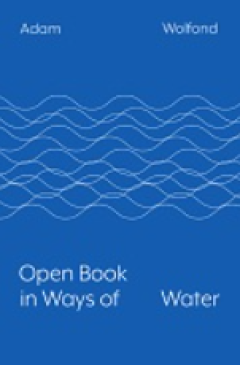
E-book Open Book in Ways of Water
The water I want to well is the deep language making meaning that deepens the way we think about autistic perception. The well is the way we rapaciously answer the way that neurotypicality speaks about arrangement of art attention and autistic importance that people don’t really want and I think that the water is required for easy language and should not sta…
- Edisi
- -
- ISBN/ISSN
- 9781685711399
- Deskripsi Fisik
- 101 hlm
- Judul Seri
- -
- No. Panggil
- 618.985882 WOL o
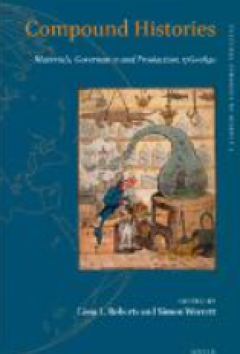
E-book Compound Histories : Materials, Governance and Production, 1760 1840
Power, transformation, promise, subjugation: terms that might easily be invoked to describe the decades between 1760 and 1840. Together they point toward the multi-faceted developments through which Europe took on its modern character and dominant position in the world – what this volume refers to as ‘compound histories’. Simultaneously …
- Edisi
- -
- ISBN/ISSN
- 9789004325562
- Deskripsi Fisik
- 402 hlm
- Judul Seri
- -
- No. Panggil
- 902 WER c
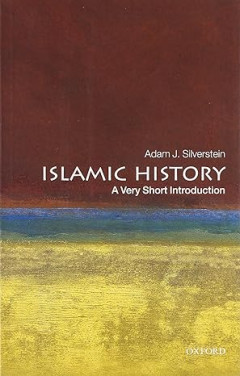
E-book Islamic History: A Very Short Introduction
Opening with a lucid overview of the rise and spread of Islam, from the seventh to the twenty-first century, this Very Short Introduction introduces the story of Islamic history, charting the evolution of what was originally a small, localized community of believers into an international religion with over a billion adherents. The book examines how Islam rose from the obscurity of seventh-centu…
- Edisi
- -
- ISBN/ISSN
- 9780199545728
- Deskripsi Fisik
- 152 halaman
- Judul Seri
- -
- No. Panggil
- 297.6 SIL i
E-book Jamaica Making : The Theresa Roberts Art Collection
his exhibition at the historic Victoria Gallery and Museum, Liverpool, comprises almost entirely of art works in the collection of Theresa Roberts, who is founder and owner of the Jamaica Patty Co. restaurant, based in Covent Garden, London.Theresa Roberts was born in Jamaica to parents who emigrated to the United Kingdom as part of the ‘Windrush Generation’: those who were invited by Briti…
- Edisi
- -
- ISBN/ISSN
- 9781800855472
- Deskripsi Fisik
- 96 hlm
- Judul Seri
- -
- No. Panggil
- 708 ROB j
E-book History of Alchemy
- Edisi
- -
- ISBN/ISSN
- -
- Deskripsi Fisik
- 132 halaman, ilus.
- Judul Seri
- -
- No. Panggil
- 540.1 MAD h 002892-eB-0122
- Edisi
- -
- ISBN/ISSN
- -
- Deskripsi Fisik
- 132 halaman, ilus.
- Judul Seri
- -
- No. Panggil
- 540.1 MAD h 002892-eB-0122
E-book Remote Capture : Digitising Documentary Heritage in Challenging Locations
Digitisation is complex and although there are many resources available, there is nothing that quite targets the specialist needs of any current or prospective EAP applicant. A potential EAP grant holder needs to become an expert in so many disciplines: they are required to be competent at project management; be able to accurately assess the amount of material t…
- Edisi
- -
- ISBN/ISSN
- 9781783744756
- Deskripsi Fisik
- 194 hlm
- Judul Seri
- -
- No. Panggil
- 770 BUT r
E-book Encyclopedia of Management Theory
The word manage, according to the Oxford English Dictionary, is derivative of the Latin manus, or hand and emerges from the Italian maneggiare, which refers to the handling or training of horses. Its use has since been expanded to represent a broader concern for the proper handling of things or people, particularly with regard to a company or organization. This is true across multiple levels of…
- Edisi
- -
- ISBN/ISSN
- -
- Deskripsi Fisik
- 1053 hlm
- Judul Seri
- -
- No. Panggil
- 658.003 ABR e
E-book Populations Estimation of Rusa Deer and Hunting Patterns in Tanah Papu…
Wildlife in Papua, particularly the rusa deer play significant role both in the livelihood and the culture of local people in Tanah Papua. Moreover, transmigrant communities and other ethnic groups appear to rely on wildlife hunting and utilize them for various purposes. However, the utilization of wildlife should be carried out within sustainable biological boundaries. Wildlife is part of the …
- Edisi
- -
- ISBN/ISSN
- -
- Deskripsi Fisik
- 32 hlm
- Judul Seri
- -
- No. Panggil
- 599.6 PAN p
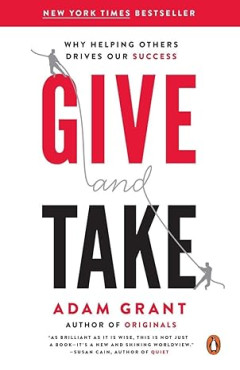
E-Book Give and Take: Why Helping Others Drives Our Success
For generations, we have focused on the individual drivers of success: passion, hard work, talent, and luck. But in today’s dramatically reconfigured world, success is increasingly dependent on how we interact with others. In Give and Take, Adam Grant, an award-winning researcher and Wharton’s highest-rated professor, examines the surprising forces that shape why some people rise to the top…
- Edisi
- -
- ISBN/ISSN
- 9780143124986
- Deskripsi Fisik
- 259 halaman
- Judul Seri
- -
- No. Panggil
- 155.25 GRA g
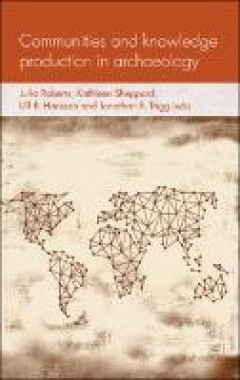
E-Book Communities and Knowledge Production in Archaeology
The dynamic processes of knowledge production in archaeology and elsewhere in the humanities and social sciences are increasingly viewed as the collaborative effort of groups, clusters and communities of researchers rather than the isolated work of so-called ‘instrumental’ actors. Shifting focus from the individual scholar to the wider social contexts of her work and the dynamic creative pr…
- Edisi
- -
- ISBN/ISSN
- 9781526134561
- Deskripsi Fisik
- 269 halaman
- Judul Seri
- -
- No. Panggil
- 930.1 ROB c
E-book The Early History of Rome
Whether the task I have undertaken of writing a complete history of the Roman people from the very commencement of its existence will reward me for the labour spent on it, I neither know for certain, nor if I did know would I venture to say. For I see that this is an old-established and a common practice, each fresh writer being invariably persuaded that he will either attain greater certainty …
- Edisi
- -
- ISBN/ISSN
- -
- Deskripsi Fisik
- 1881 hlm
- Judul Seri
- -
- No. Panggil
- 937 LIV t
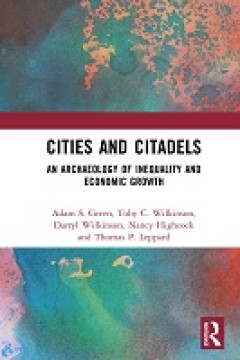
E-Book Cities and Citadels: An Archaeology of Inequality and Economic Growth
Cities and Citadels provides an urgent update of archaeology’s engagement with economic theory. Recent events have forced a major reassessment of economic thinking. In the wake of the 2008 Great Recession and the economic impact of the COVID-19 Pandemic, the world finds itself in unprecedented times. Even though archaeology typically concerns itself with the remote past, it must also help us …
- Edisi
- -
- ISBN/ISSN
- 9781032024851
- Deskripsi Fisik
- 287 halaman
- Judul Seri
- -
- No. Panggil
- 930.1 GRE c
E-book Programming Persistent Memory : A Comprehensive Guide for Developers
This book describes programming techniques for writing applications that use persistent memory. It is written for experienced software developers, but we assume no previous experience using persistent memory. We provide many code examples in a variety of programming languages. Most programmers will understand these examples, even if they have not previously used the specific language. he persis…
- Edisi
- -
- ISBN/ISSN
- 9781484249321
- Deskripsi Fisik
- 457 hllm
- Judul Seri
- -
- No. Panggil
- 004.6 SCA p
E-book The Spiritual Laws
I have always asked myself many questions, very profound questions. The kind of questions that are called existential questions. I have always wanted to know the reason for my life, the reason for all of our lives. Who am I? Why do I exist? Why do others exist? What are we doing here? Have we come here for anything in particular? Why are we born, why do we die? Where do we come from and where a…
- Edisi
- -
- ISBN/ISSN
- -
- Deskripsi Fisik
- 243 hlm
- Judul Seri
- -
- No. Panggil
- 230 GUI t
E-book Accounting Principle : Melalui Pendekatan Sistem Informasi
Standar Akuntansi Keuangan (SAK) yang disusun oleh lembaga Ikatan Akuntan Indonesia (IAI) selalu mengacu pada teori-teori yang berlaku daan memberikan tafsiran dan penalaran yang telah mendalam dalam hal praktek terutama dalam pembuatan laporan keuangan dalam memperolah informasi yang akurat sehubungan data ekonomi. Berdasarkan pernyataan di atas dapat dipahami bahwa Pernyataan Standar Akuntan…
- Edisi
- -
- ISBN/ISSN
- -
- Deskripsi Fisik
- 110 hlm
- Judul Seri
- -
- No. Panggil
- 657 ADA a
E-book A poor wise man
The city turned its dreariest aspect toward the railway on blackened walls, irregular and ill-paved streets, gloomy warehouses, and over all a gray, smoke-laden atmosphere which gave it mystery and often beauty. Sometimes the softened towers of the great steel bridges rose above the river mist like fairy towers suspended between Heaven and earth. And again the sun tipped the surrounding hi…
- Edisi
- -
- ISBN/ISSN
- -
- Deskripsi Fisik
- 469 hlm; 0.8 mb
- Judul Seri
- -
- No. Panggil
- 823 RIN a

E-book The Breaking Point
Elizabeth Wheeler lives in a small town, sings in the church choir, and dreams of a man who will sweep her off her feet. Instead, she is thrust into a series of events beyond her control leading to passion, madness, betrayal, and ultimately, murder! Can she ever set thing right?
- Edisi
- -
- ISBN/ISSN
- -
- Deskripsi Fisik
- 304 p.1334 KB
- Judul Seri
- -
- No. Panggil
- 823 ROB t

How to multiply your child's intelligence : A practical guide for parents of …
You've heard of IQ. You've heard if EQ. And you definitely know the importance of getting good gredes at school. But do you know that there are far more contributing factors to success? How to Multiply your child's intelligece takes you beyond 'A's and examinations to explain why some seeminglly hopeless cases emerge as high achievers later on. It introduces seven intelligences inherent in ev…
- Edisi
- cet. 1
- ISBN/ISSN
- 0131013556
- Deskripsi Fisik
- viii + 285 pages; illus. 15,5 x 23,5 cm
- Judul Seri
- -
- No. Panggil
- 153 LWI h
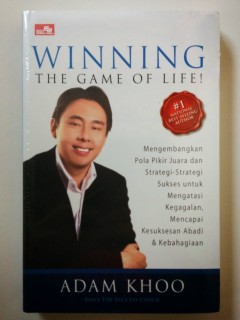
Winning the game of life : Mengembangkan pola pikir juara dan strategi-strate…
Sejak kita dilahirkan, kita memasuki game of life (permainan kehidupan). Seperti semua permainan lain, permainan kehidupan memiliki aturan-aturan spesifik yang perlu kita ikuti. Permainan kehidupan dapat bersifat kompetitif dan dapat menjadi sangat menyenangkan. Kita dapat memilih untuk duduk di pinggiran dan mengagumi cara orang lain memainkannya atau kita sendiri dapat menjadi pemainnya. K…
- Edisi
- cet. 3
- ISBN/ISSN
- 9786020030760
- Deskripsi Fisik
- xv + 349 hlm. 15 x 23 cm
- Judul Seri
- -
- No. Panggil
- 155.25 KHO w

MEMBONGKAR MANIPULASI SEJARAH: KONTROVERSI PELAKU DAN PERISTIWA
- Edisi
- cet. 3
- ISBN/ISSN
- 979-709-404-1
- Deskripsi Fisik
- XI; 257 hlm; bibl;14 x 21 cm
- Judul Seri
- -
- No. Panggil
- 322.4 ADA m
- Edisi
- cet. 3
- ISBN/ISSN
- 979-709-404-1
- Deskripsi Fisik
- XI; 257 hlm; bibl;14 x 21 cm
- Judul Seri
- -
- No. Panggil
- 322.4 ADA m

MEMBONGKAR MANIPULASI SEJARAH: Kontroversi pelaku & peristiwa
- Edisi
- -
- ISBN/ISSN
- 979-709-404-1
- Deskripsi Fisik
- xii; 258hlm; illus;14 x 21 cm
- Judul Seri
- -
- No. Panggil
- 322.4 ADA m
- Edisi
- -
- ISBN/ISSN
- 979-709-404-1
- Deskripsi Fisik
- xii; 258hlm; illus;14 x 21 cm
- Judul Seri
- -
- No. Panggil
- 322.4 ADA m

PELURUSAN SEJARAH INDONESIA
- Edisi
- cet. 2
- ISBN/ISSN
- 978-602-8335-15
- Deskripsi Fisik
- xviii; 265 hlm;14x21 cm
- Judul Seri
- -
- No. Panggil
- 320.9 ADA p
- Edisi
- cet. 2
- ISBN/ISSN
- 978-602-8335-15
- Deskripsi Fisik
- xviii; 265 hlm;14x21 cm
- Judul Seri
- -
- No. Panggil
- 320.9 ADA p

MEMBONGKAR MANIPULASI SEJARAH: Kontroversi Pelaku dan Peristiwa
- Edisi
- cet. 3
- ISBN/ISSN
- 979-709-404-1
- Deskripsi Fisik
- xi; 257 hlm; illus;14x21 cm
- Judul Seri
- -
- No. Panggil
- 322.4 ADA m
- Edisi
- cet. 3
- ISBN/ISSN
- 979-709-404-1
- Deskripsi Fisik
- xi; 257 hlm; illus;14x21 cm
- Judul Seri
- -
- No. Panggil
- 322.4 ADA m

MENGGAPAI IMPIAN
- Edisi
- cet. 1
- ISBN/ISSN
- 979-22-0702-3
- Deskripsi Fisik
- 480 hlm;11 x 18 cm
- Judul Seri
- -
- No. Panggil
- 823 ROB m
- Edisi
- cet. 1
- ISBN/ISSN
- 979-22-0702-3
- Deskripsi Fisik
- 480 hlm;11 x 18 cm
- Judul Seri
- -
- No. Panggil
- 823 ROB m

MOMEN PENUH KEAJAIBAN
- Edisi
- cet. 1
- ISBN/ISSN
- 978-979-22-3148
- Deskripsi Fisik
- 328 hlm;11 x 18cm
- Judul Seri
- -
- No. Panggil
- 823 ROB m
- Edisi
- cet. 1
- ISBN/ISSN
- 978-979-22-3148
- Deskripsi Fisik
- 328 hlm;11 x 18cm
- Judul Seri
- -
- No. Panggil
- 823 ROB m

MERAIH IMPIAN
- Edisi
- cet. 1
- ISBN/ISSN
- 979-22-0514-4
- Deskripsi Fisik
- 464 hlm;11 x 18 cm
- Judul Seri
- -
- No. Panggil
- 823 ROB m
- Edisi
- cet. 1
- ISBN/ISSN
- 979-22-0514-4
- Deskripsi Fisik
- 464 hlm;11 x 18 cm
- Judul Seri
- -
- No. Panggil
- 823 ROB m

INDAHNYA DUSTA
- Edisi
- cet. 1
- ISBN/ISSN
- 979-22-0319-2
- Deskripsi Fisik
- 304 hlm;11 x 18 cm
- Judul Seri
- -
- No. Panggil
- 823 ROB i
- Edisi
- cet. 1
- ISBN/ISSN
- 979-22-0319-2
- Deskripsi Fisik
- 304 hlm;11 x 18 cm
- Judul Seri
- -
- No. Panggil
- 823 ROB i
 Karya Umum
Karya Umum  Filsafat
Filsafat  Agama
Agama  Ilmu-ilmu Sosial
Ilmu-ilmu Sosial  Bahasa
Bahasa  Ilmu-ilmu Murni
Ilmu-ilmu Murni  Ilmu-ilmu Terapan
Ilmu-ilmu Terapan  Kesenian, Hiburan, dan Olahraga
Kesenian, Hiburan, dan Olahraga  Kesusastraan
Kesusastraan  Geografi dan Sejarah
Geografi dan Sejarah